- Moisture Levels
- Poor Air Circulation
- Overwatering
- Lack of Sunlight
- 1. Location
- 2. Indoor Growing
- 3. Overcrowding
- 4. Shading Techniques
- Proper Seedling Spacing
- Disinfected Tools and Containers
- Tips for Disinfecting Tools and Containers
- Adequate Drainage
- Healthy Soil
- 1. Proper Drainage
- 2. pH Balance
- 3. Proper Nutrient Balance
- 4. Crop Rotation
- “Question-Answer”
- What causes mould on seedlings?
- How can excessive moisture lead to mould on seedlings?
- What can I do to prevent mould on seedlings?
- Can contaminated soil or pots contribute to mould on seedlings?
- How does poor air circulation affect seedlings?
- “Video” How to Prevent & Treat Mold Issues on Seedlings
When starting a garden from seeds, it can be disheartening to discover mould growing on your seedlings. Mould can hinder their growth and even cause them to die if not addressed promptly. Understanding the common causes of mould on seedlings is essential in preventing its occurrence and ensuring the success of your gardening efforts.
One of the most common causes of mould on seedlings is excess moisture. Overwatering or using containers without proper drainage can create an environment where mould thrives. Additionally, high humidity levels can promote mould growth. It is crucial to provide adequate water to your seedlings and maintain proper ventilation to prevent excess moisture from accumulating.
Another common cause of mould on seedlings is poor air circulation. When seedlings are crowded together or placed in a closed environment, airflow is restricted, creating favourable conditions for mould to grow. It is recommended to space your seedlings apart and provide a fan or open windows to ensure proper air circulation.
Poor hygiene practices can also contribute to mould growth on seedlings. Using contaminated soil, reusing containers without proper cleaning, or handling seedlings with dirty hands can introduce mould spores to your plants. It is important to maintain cleanliness and practice good hygiene when handling seedlings to prevent the spread of mould.
Lastly, improper temperature conditions can encourage mould growth on seedlings. Cold and damp conditions are ideal for mould to thrive. It is important to provide the right temperature and humidity levels for your seedlings by using heating mats, grow lights, or a cold frame to create a suitable environment.
Overall, preventing mould on seedlings involves managing moisture levels, promoting air circulation, maintaining cleanliness, and providing suitable temperature conditions. By implementing these tips, you can ensure the health and vitality of your seedlings, setting them up for successful growth in your garden.
Moisture Levels
Moisture is a crucial factor in the growth of seedlings, but it can also contribute to the development of mould. Seeds and seedlings need a certain amount of moisture to germinate and grow, but excessive moisture can create an environment that is conducive to mould growth.
1. Overwatering: Overwatering is a common cause of excessive moisture levels. When too much water is applied to seedlings, the soil becomes saturated and does not allow proper drainage. This can lead to waterlogged conditions, which promote the growth of mould. To prevent overwatering, it is important to water seedlings only when the soil feels dry to the touch.
2. Poor drainage: Inadequate drainage can also lead to excessive moisture levels. If the containers or pots used for seedlings do not have drainage holes, water can accumulate at the bottom and create a moist environment that is favorable for mould growth. It is important to ensure that seedling containers have proper drainage to allow excess water to escape.
3. High humidity: High humidity levels can contribute to the growth of mould. When the air is humid, moisture tends to linger, creating a damp environment that is ideal for mould spores to multiply. To control humidity levels, consider using a dehumidifier or fan to improve air circulation around seedlings.
4. Improper ventilation: Insufficient airflow around seedlings can also contribute to the development of mould. When air does not circulate properly, moisture can accumulate, increasing the likelihood of mould growth. To improve ventilation, consider placing seedlings in a well-ventilated area or using a fan to promote air movement.
To prevent mould growth due to excessive moisture levels, it is important to maintain the right balance of moisture for seedlings. Regularly monitor soil moisture levels, provide proper drainage, control humidity, and ensure adequate ventilation to create a healthy growing environment for your seedlings.
Poor Air Circulation
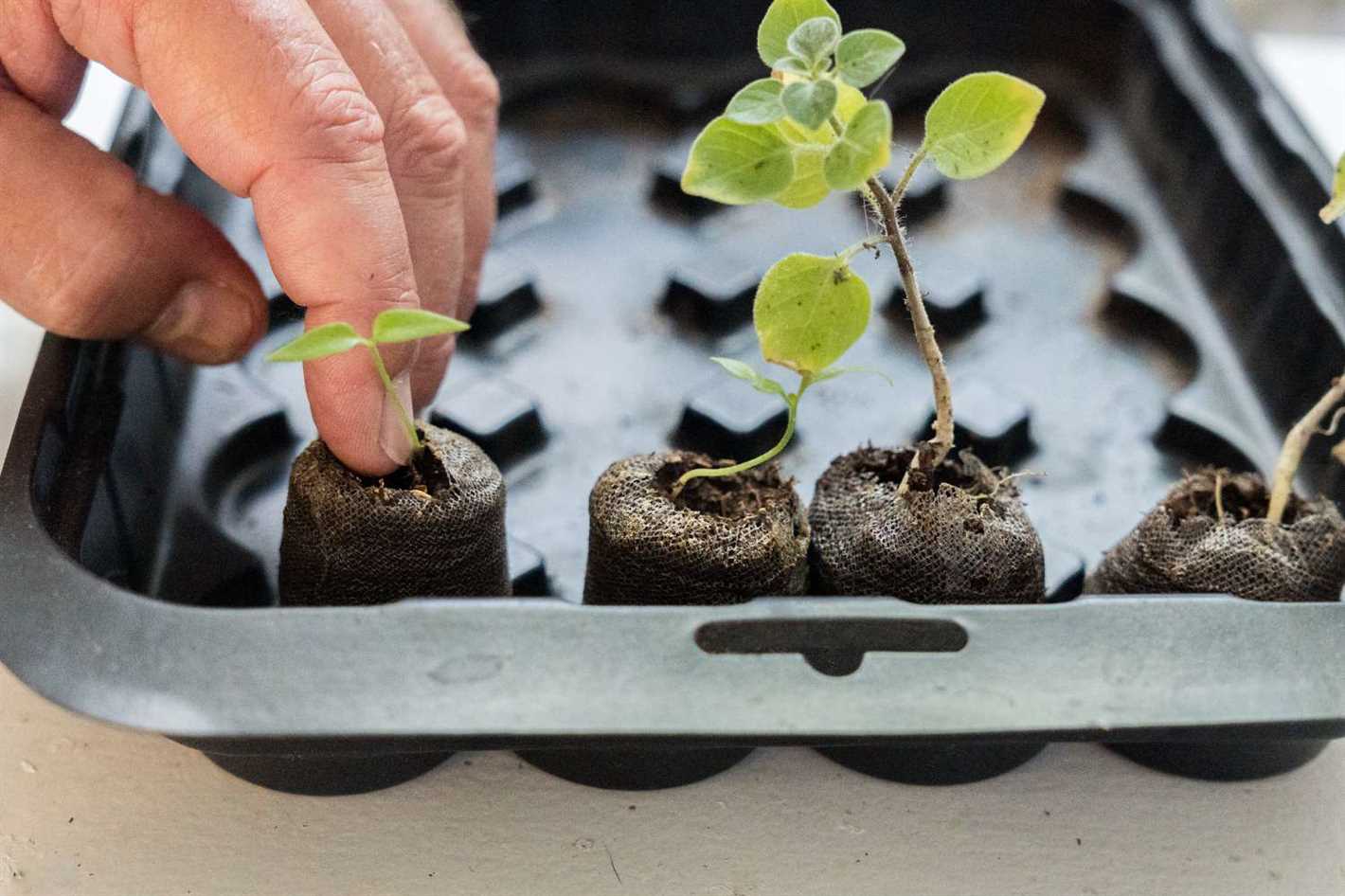
Poor air circulation can contribute to the growth of mould on seedlings. When the air does not circulate efficiently around your plants, it creates a stagnant and humid environment, which is ideal for mould growth.
To prevent this, make sure that your seedlings are properly spaced apart. If the plants are too close together, the air won’t be able to flow freely between them. Additionally, avoid overcrowding your growing area.
It’s also important to provide adequate ventilation in your growing space. Open windows or use fans to help promote air movement. This will help to reduce humidity levels and minimize the risk of mould formation.
Overwatering
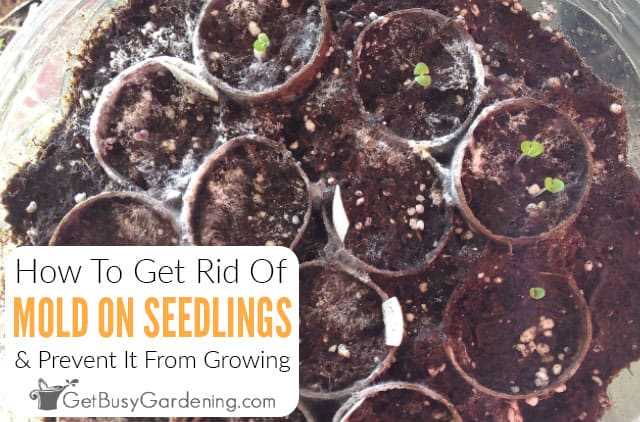
Overwatering is one of the most common causes of mould on seedlings. When plants are overwatered, their roots become saturated, leading to an excess of moisture in the soil. This creates the perfect environment for mould to thrive.
To prevent overwatering and reduce the risk of mould, it’s important to establish a proper watering routine. Here are some tips:
- Before watering, check the moisture level of the soil by inserting your finger about an inch deep. Only water if the soil feels dry at this depth.
- Avoid watering on a regular schedule and instead adjust the frequency based on the needs of your plants and the moisture level of the soil.
- Water the plants thoroughly, allowing the water to penetrate deep into the soil. This encourages the plants to develop a strong root system.
- Ensure proper drainage by using well-draining soil and containers with drainage holes. Excess water should be able to freely flow out of the container.
- Avoid using saucers or trays underneath the containers, as this can trap excess water and lead to overwatering.
By following these tips and being mindful of your watering habits, you can help prevent overwatering and reduce the risk of mould on your seedlings.
Lack of Sunlight
A lack of sunlight is a common cause of mould growth on seedlings. Sunlight is essential for providing the necessary energy for photosynthesis, which allows plants to produce food and grow. When seedlings do not receive enough sunlight, they become weak and more susceptible to mould and fungal infections. Here are some factors that contribute to a lack of sunlight for seedlings:
1. Location
The location of your seedlings plays a crucial role in their access to sunlight. If your seedlings are placed in a shady spot or an area that is obstructed by buildings, trees, or other structures, they may not receive adequate sunlight. It is essential to choose a location that receives at least 6 hours of direct sunlight every day.
2. Indoor Growing
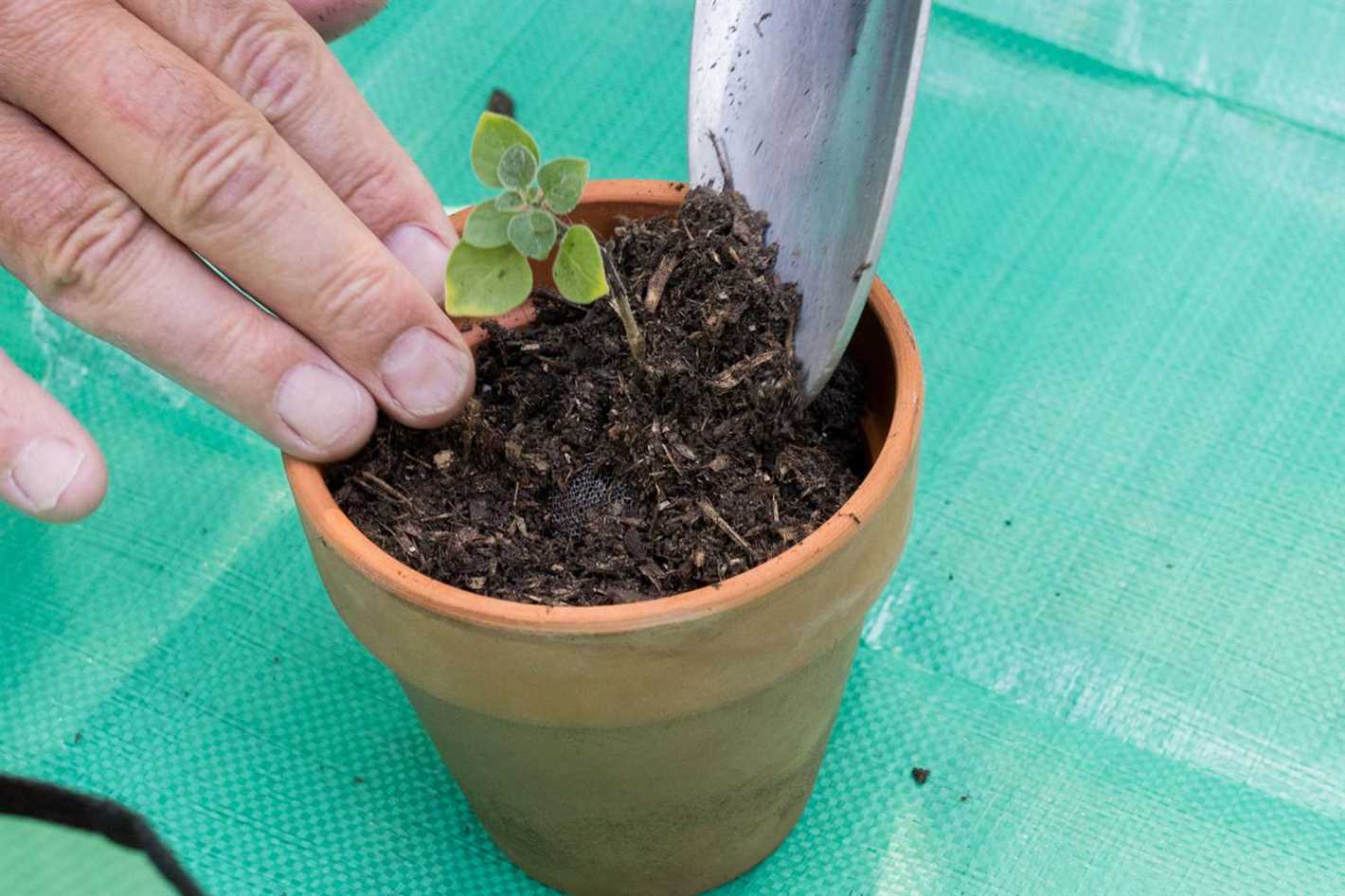
If you are growing seedlings indoors, it is crucial to provide them with sufficient artificial light. Natural light from windows may not be enough, especially during winter or in rooms with limited exposure to sunlight. Consider using grow lights specifically designed for plants to ensure that your seedlings receive the appropriate amount of light.
3. Overcrowding
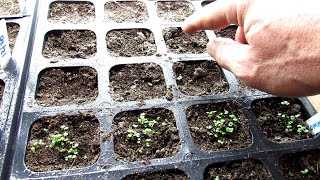
Overcrowding seedlings in trays or containers can also lead to a lack of sunlight for individual plants. When seedlings are closely spaced, they shade each other, preventing sunlight from reaching the lower leaves. To ensure adequate sunlight, provide enough space between seedlings, or consider transplanting them into separate containers.
4. Shading Techniques
In some cases, shading techniques may be necessary to protect seedlings from excessive sunlight or high temperatures. However, these techniques should be used with caution, as excessive shading can also impede their growth. If you are using shading techniques, regularly monitor the amount of sunlight reaching the seedlings and adjust accordingly to prevent mould growth.
In conclusion, a lack of sunlight can contribute to mould growth on seedlings. By choosing the right location, providing sufficient artificial light for indoor growing, avoiding overcrowding, and using shading techniques appropriately, you can effectively prevent mould and fungal infections caused by a lack of sunlight.
Proper Seedling Spacing
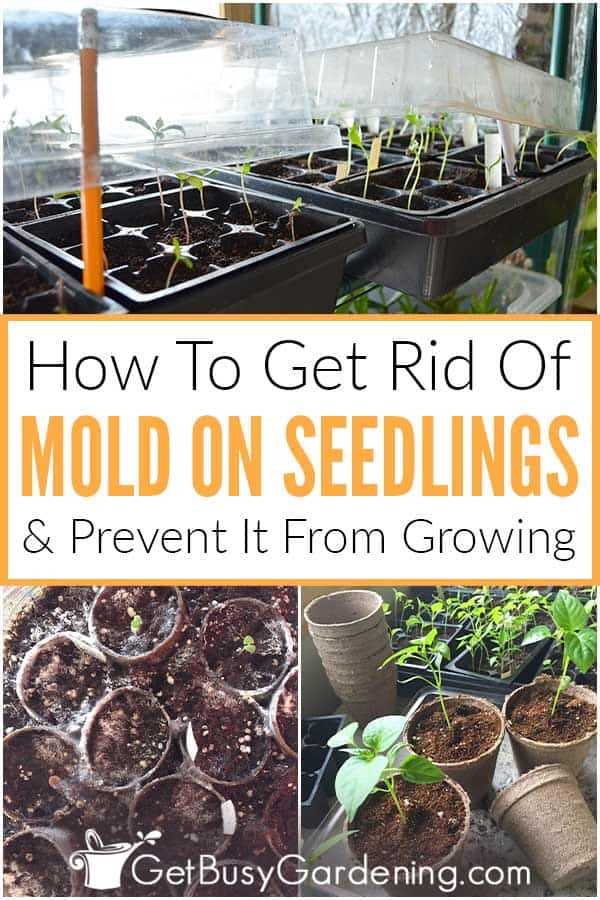
One important factor in preventing mould on seedlings is proper spacing. When seedlings are crowded and placed too closely together, it creates an environment that is conducive to mould growth. Here are some tips for proper seedling spacing:
- Follow seed packet instructions: Different types of plants have different spacing requirements. Always refer to the instructions on the seed packet for specific spacing recommendations.
- Allow for air circulation: When seedlings are too close to each other, air circulation is restricted. Lack of proper air flow can lead to increased humidity and moisture, which can encourage the growth of mould. Leave enough space between seedlings to allow for adequate air circulation.
- Thin out overcrowded seedlings: If seedlings have already been planted too closely together, it may be necessary to thin them out. Carefully remove the excess seedlings, leaving only the strongest and healthiest ones. This will not only prevent mould growth but also promote better growth and development of the remaining seedlings.
Proper seedling spacing is an important step in preventing mould growth. By ensuring adequate space between seedlings, you can create a healthier environment for their growth and minimize the risk of mould infestation.
Disinfected Tools and Containers
Using disinfected tools and containers is crucial in preventing mould infestations on seedlings. Contaminated tools and containers can be a major source of mould spores, which can easily spread and infect the seedlings.
Tips for Disinfecting Tools and Containers
- Clean with soap and water: Before disinfecting, make sure to clean the tools and containers thoroughly with soap and water to remove any dirt or debris.
- Use bleach solution: Prepare a bleach solution by mixing 1 part bleach with 9 parts water. Soak the tools and containers in the solution for at least 10 minutes to kill any mould spores.
- Rinse with clean water: After soaking, rinse the tools and containers with clean water to remove any residue from the bleach solution.
- Dry completely: Allow the tools and containers to dry completely before using them again. Moisture can promote mould growth, so make sure they are completely dry to prevent any potential contamination.
Remember to disinfect your tools and containers regularly, especially if you have had previous mould issues. By practicing good hygiene and using disinfected tools and containers, you can significantly reduce the risk of mould infestations on your seedlings.
Adequate Drainage
Inadequate drainage is one of the main factors that contribute to the growth of mould on seedlings. When water does not have a way to escape from the plant container, it can lead to excessive moisture in the soil, creating an ideal environment for mould to thrive.
To prevent mould growth due to inadequate drainage, it is important to ensure that the plant containers have proper drainage holes. These holes allow excess water to drain out and prevent water from gathering at the bottom of the container.
When transplanting seedlings, it is essential to choose a container with drainage holes or create them if they are not present. This can be done by using a drill to create holes in the bottom of the container or placing a layer of gravel or small stones at the bottom to facilitate drainage.
In addition to drainage holes, it is also important to choose a suitable growing medium that promotes adequate drainage. A well-draining soil mix, such as one that contains perlite or vermiculite, helps prevent water from accumulating and reduces the risk of mould growth.
Regularly monitoring the moisture levels of the soil is also crucial. Overwatering can lead to waterlogged soil, promoting the growth of mould. To prevent this, allow the soil to dry out slightly between waterings and only water when necessary.
By ensuring adequate drainage in your seedling containers and using a well-draining soil mix, you can help prevent the growth of mould and promote healthy seedling development.
Healthy Soil
A vital component of preventing mould on seedlings is maintaining healthy soil conditions. Healthy soil provides the necessary nutrients for seedlings to grow and thrive, reducing their vulnerability to mould and other diseases. Here are some tips for maintaining healthy soil:
1. Proper Drainage
Ensuring proper drainage is crucial for healthy soil. Excess moisture can lead to soil compaction and create a favorable environment for mould growth. To improve drainage, consider incorporating organic matter such as compost or well-aged manure into the soil. This will help improve soil structure and increase its water-holding capacity.
2. pH Balance
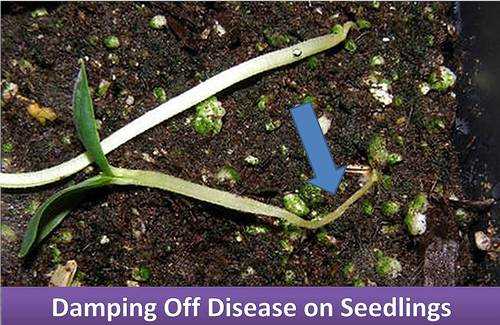
The pH level of the soil plays a significant role in the availability of nutrients to plants. Most seedlings prefer a slightly acidic soil with a pH range between 6 and 7. Regularly test the pH level of the soil and make adjustments if necessary. Adding lime can help raise the pH, while sulfur can lower it.
3. Proper Nutrient Balance
Seedlings require a balanced supply of nutrients to grow and develop properly. Conduct a soil test to determine the nutrient levels and adjust accordingly. Fertilizers can be used to provide essential nutrients that may be lacking in the soil. However, it’s important not to over-fertilize, as this can lead to nutrient imbalances and promote mould growth.
4. Crop Rotation
Practicing crop rotation can help prevent the build-up of diseases, including mould, in the soil. Avoid planting seedlings from the same family in the same spot year after year. Instead, rotate crops to different areas or use a three-year rotation cycle. This helps disrupt disease cycles and reduces the risk of mould contamination.
By following these tips for maintaining healthy soil, you can create an environment that is less prone to mould growth and provide optimal conditions for seedlings to thrive.
“Question-Answer”
What causes mould on seedlings?
Mould on seedlings can be caused by several factors, including excessive moisture, poor air circulation, high humidity, and contaminated soil or pots.
How can excessive moisture lead to mould on seedlings?
Excessive moisture creates a perfect environment for mould growth. When seedlings are constantly wet, the moisture doesn’t evaporate quickly, allowing mould spores to settle and grow.
What can I do to prevent mould on seedlings?
To prevent mould on seedlings, you can take several measures such as using well-draining soil, providing proper air circulation, avoiding over-watering, and maintaining moderate humidity levels.
Can contaminated soil or pots contribute to mould on seedlings?
Yes, contaminated soil or pots can introduce mould spores to your seedlings. It is important to use clean and sterilized pots, as well as high-quality soil to minimize the risk of mould growth.
How does poor air circulation affect seedlings?
Poor air circulation creates stagnant air around the seedlings, which increases the chances of moisture buildup and mould growth. It is important to provide proper ventilation to keep the air fresh and reduce the risk of mould development.







